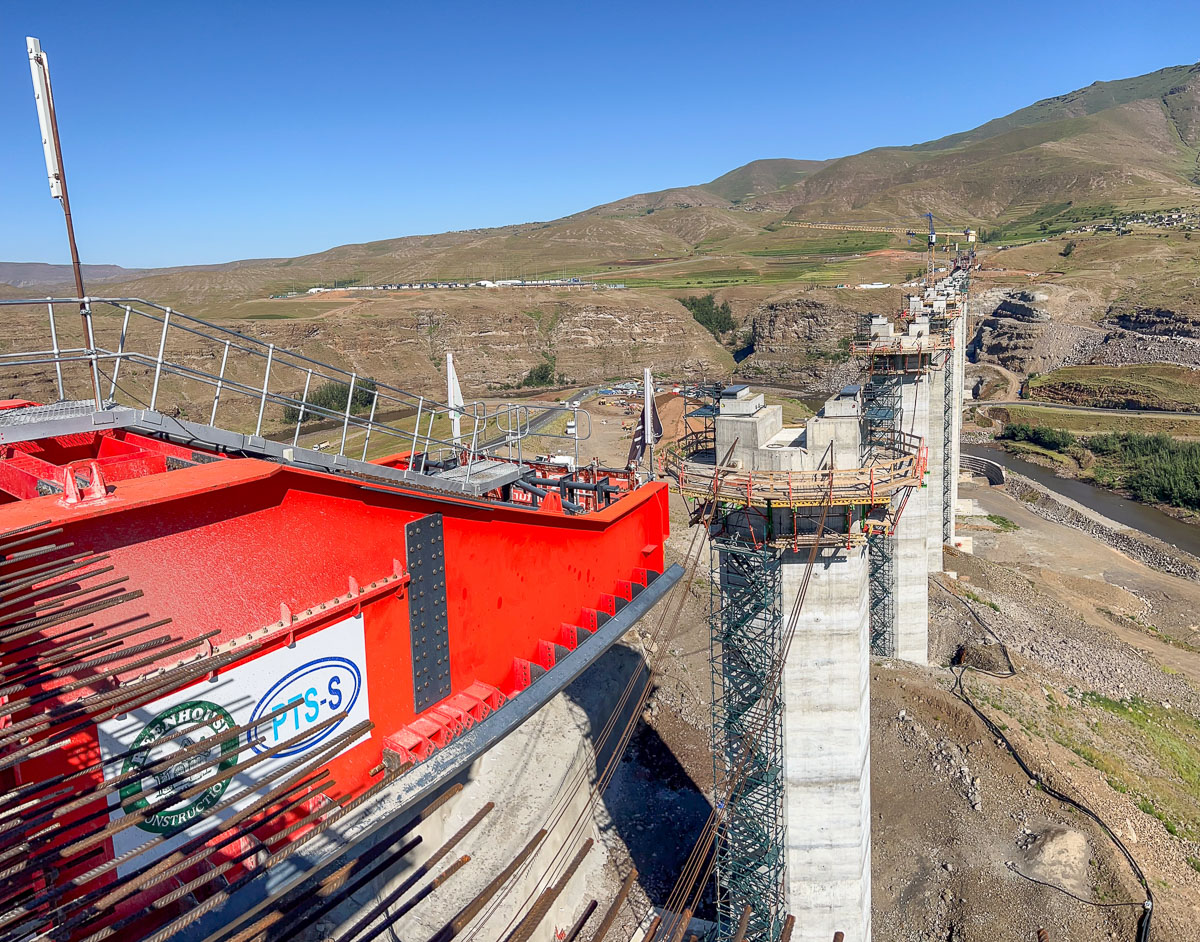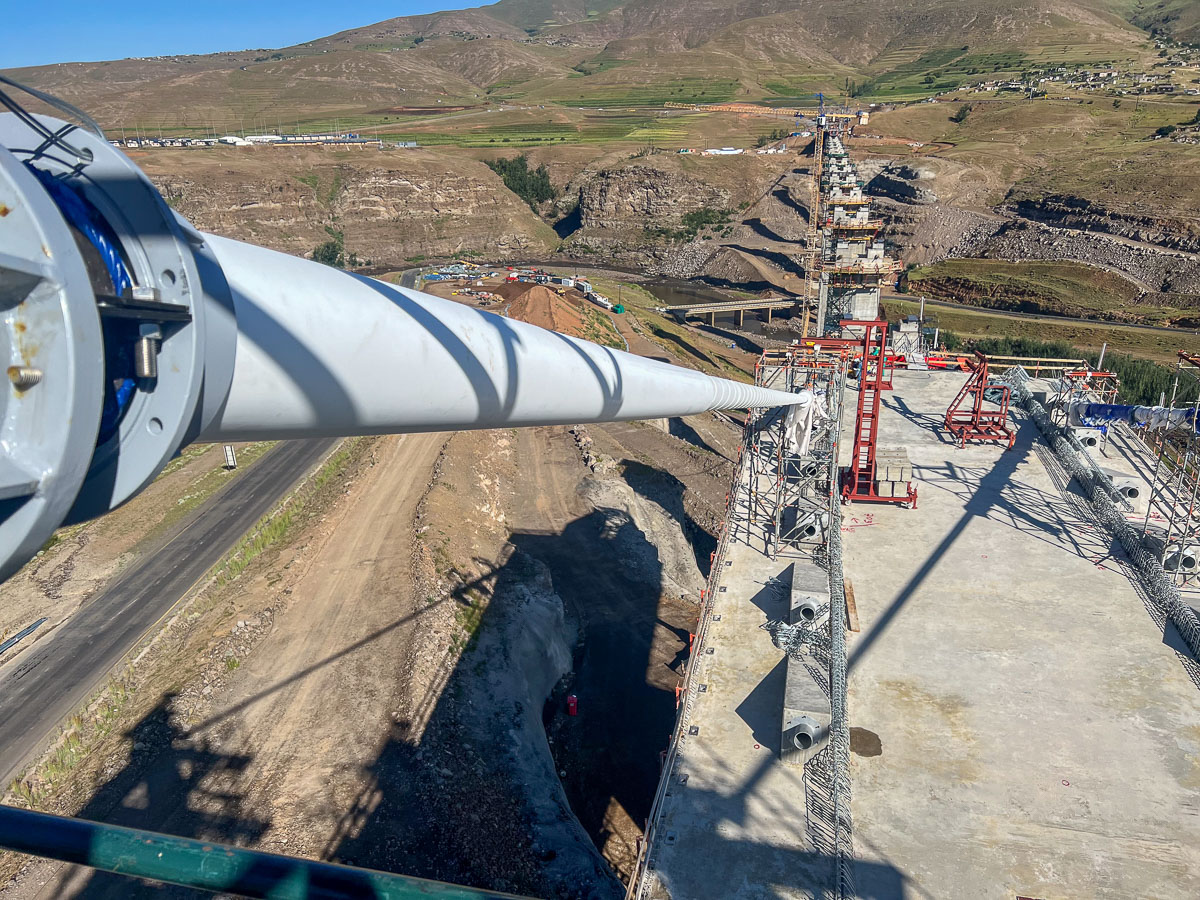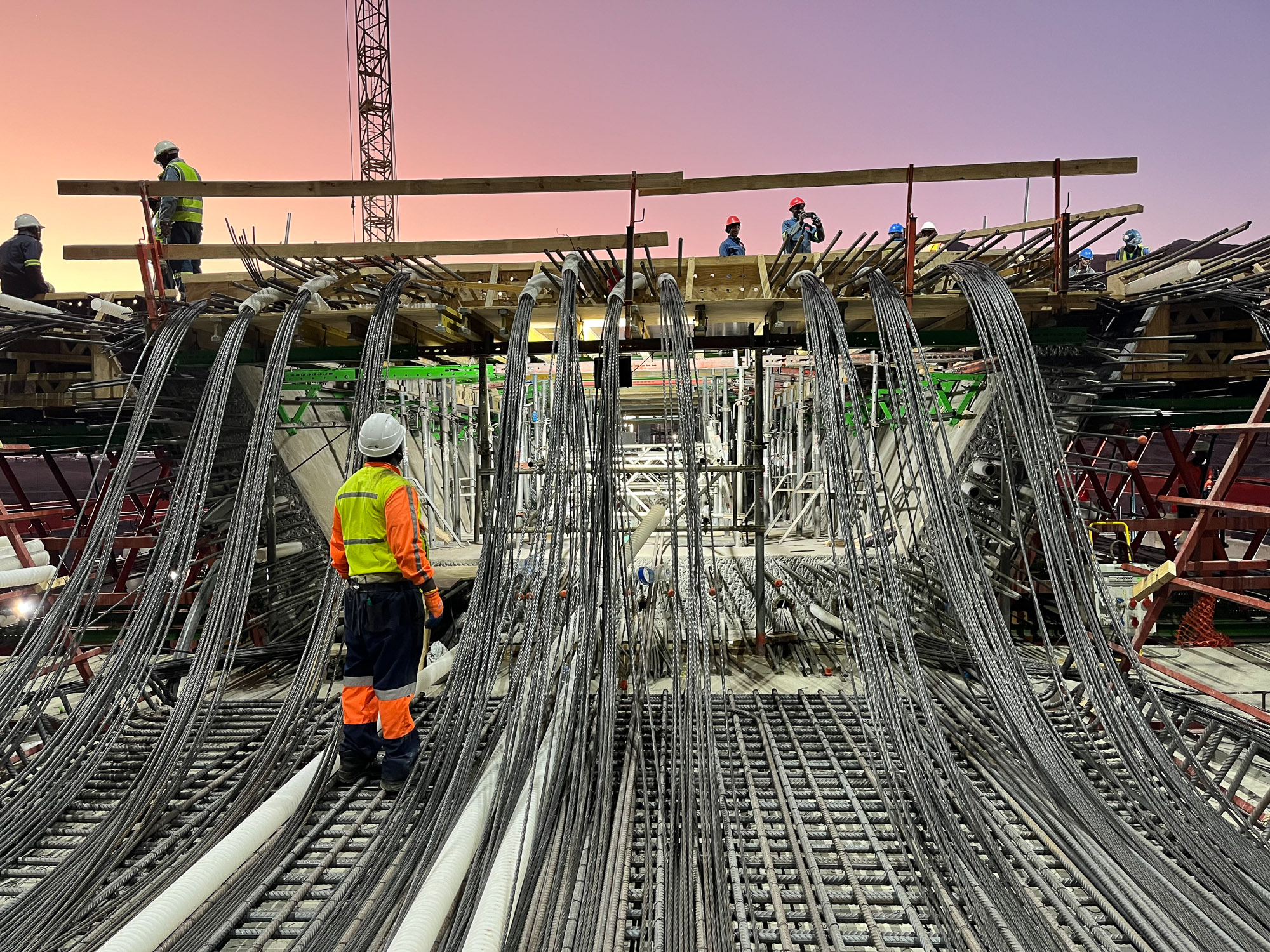Senqu River Bridge
Senqu Bridge, Lesotho: An 825m incrementally launched, extradosed stay cable bridge. Complex structural engineering for vital infrastructure.

Structural Details
The total length of the viaduct is 822m with the following span arrangement:
- 2x end spans of 36m between the abutments and the first pier adjacent to the abutments, 13 internal spans with a length of 50m and 1x centre span of 100m supported by an extradosed stay cable arrangement consisting of two pylons located on the two piers on either side of the 100m span, with each pylon supporting 6x 37-strand extradosed stay cables using a saddle arrangement built into the pylons for each stay.
- The bridge deck has a downhill slope of 0.5% from abutment A1 to abutment A2
- The section from Abutment A1 to the joint between Pier 7 & Pier 9 consist of 16 segments starting with segment G01 at Abutment A1 and ending with segment G16A at the centre span.
- The section from Abutment A2 to the joint between Pier 7 & Pier 9 consist of 18 segments starting with segment G33 at Abutment A1 and ending with segment G16B at the centre span.
- The bridge consists of two typical cross sections, a narrow deck section with a total width of 13,55m, starting at the abutments to the stay cable section in the centre of the bridge and then a wider deck section for the extradosed stay cable section of the bridge to accommodate the stay cable system.
Bridge deck construction method
The bridge decks were constructed using the Incremental Launch Method (ILM) as follows:
- Launching is done from the two opposing abutments towards the middle and joined in the middle of the 100m long center span, which is supported by the extradosed stay cable system.
- The two casting yards where the approximately 25m-long deck segments are constructed are located behind the two opposing abutments and consist of a casting bay constructed in concrete and founded on rock in each case. Both casting yards incorporate a stationary steel formwork system that provides the cross-sectional shape of the deck segments.
- The pulling method adopted for launching consists of hydraulic strand jacks with pull pins located in bridge deck. The relatively small deck cross section, combined with the longitudinal 0,5% uphill launch slope, required the use of 2x 450t strand jacks for the final stages of launching.
- A unique feature of this project is the much smaller than normal launch nose as the front of the bridge deck is supported by the top stay cable during the launching process, with the balance of the stay cables only installed at the end of the launching process.
Post-Tensioning & Structural Solutions (PTS-S) Scope
- PTS-S in partnership with Chinese specialist OVM International were subcontracted by the main contractor, WRES JV for the following specialist scope of work
Post Tensioning (PT) supply and execution by PTS-S, consisting of the following:
- PT material supply, which included PT cable, OVM PT anchor system, OVM ribbed HDPE PT sleeves and PTS-S Hi-Flow PT grout.
- PT equipment supply for installation, stressing and grouting of PT cable tendons.
- PT site execution, which included site installation, stressing and grouting of all PT tendons for the concentric cable tendons, draped cable tendons a well as center joint cable tendons that joined the two sections together in the center of the 100m span.
Stay cable supply and site execution, consisting of the following:
- Stay cable material supply by OVM, which included stay cable strand, form tubes through bridge decks, HDPE stay pipe, anchor system and stay saddles in pylons.
- Stay cable installation and tensioning by OVM and PTS-S.
- Stay cable monitoring system supplied and installed by OVM.
Incremental launching services by PTS-S, which included the following:
- Fabrication, supply and installation of launching girders.
- Fabrication, supply and installation of temporary launch bearings, including the supply of reinforced elastomeric sliding pads with PTFE layer on one side to facilitate the sliding of the bridge deck over the temporary launch bearings.
- Fabrication, supply, installation and operation of bridge launching system, including OVM designed hydraulic jacking equipment and any modifications to permanent works to accommodate the method of launching.
- Installation of temporary pier ties between abutments and top of piers to stabilize piers against the horizontal forces during launching as the bridge deck slides over the launch bearings on the piers
- Design, supply and installation of electronic pier monitoring system to monitor pier deflections during launching operations
4019A
Lesotho Highlands Development Authority (LHDA)
6 km West of Mokhotlong, Lesotho
Senqu River Bridge in Lesotho, which forms part of the Lesotho Highlands Water Project – Phase II
WRES JV, a joint venture consisting of Webuild S.p.A. (Italy), Raubex Construction (South Africa), Enza Construction (South Africa) & Sigma Construction (Lesotho).
ZUTARI Consulting Engineers
June 2024
Get Your Project Started Today
Ready to elevate your construction project? Contact us now for a tailored consultation or to receive a detailed quote for our specialised services.





